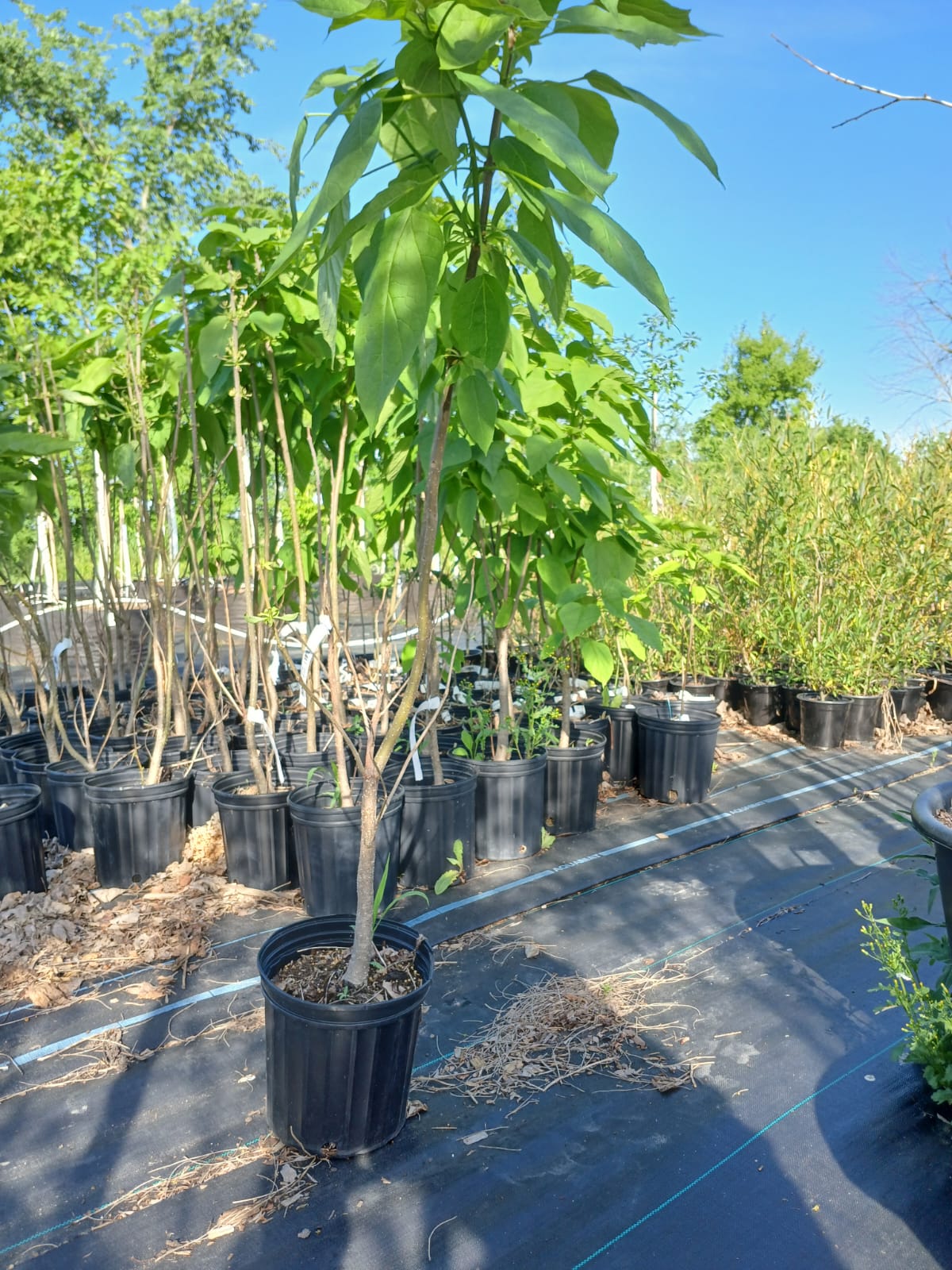Northern Catalpa
Northern Catalpa
12 in stock
The Northern Catalpa, scientifically known as Catalpa speciosa, is a deciduous tree native to the central United States. Here’s an overview of this notable tree:
-
Appearance: Northern Catalpa is a medium to large-sized tree, typically growing 40 to 70 feet (12 to 21 meters) tall with a spread of 20 to 40 feet (6 to 12 meters). It has a broad, rounded crown and a straight trunk with thick, furrowed bark. The leaves are large, heart-shaped, and arranged oppositely on the branches. They can grow up to 12 inches (30 cm) long and are light green in color, turning yellow in the fall.
-
Flowers: One of the most distinctive features of Northern Catalpa is its showy flowers. The flowers are trumpet-shaped, white with purple and yellow markings inside, and appear in large clusters (panicles) in late spring to early summer. They are fragrant and attract pollinators such as bees and butterflies.
-
Fruit: Northern Catalpa produces long, cylindrical seed pods (capsules) that are 8 to 20 inches (20 to 50 cm) long. These pods persist on the tree into winter and contain numerous small, winged seeds. The pods are not considered edible for humans but provide food for wildlife.
-
Habitat: Northern Catalpa is native to bottomlands and riverbanks in the central United States, from Illinois south to Texas and east to Georgia. It prefers moist, well-drained soils but can tolerate a range of soil types and pH levels.
-
Cultural Uses: Northern Catalpa is primarily grown as an ornamental tree for its attractive foliage, flowers, and unique seed pods. It is planted in parks, gardens, and along streets for shade and visual interest. The wood of Northern Catalpa is lightweight, soft, and durable, used historically for fence posts, railroad ties, and furniture.
-
Landscaping: In landscaping, Northern Catalpa is valued for its large, heart-shaped leaves that provide dense shade in summer. The fragrant flowers and interesting seed pods add seasonal interest to gardens and landscapes.
-
Maintenance: Northern Catalpa is generally low-maintenance once established. It benefits from regular watering during dry periods and may require pruning to remove dead or damaged branches and shape the tree.
-
Wildlife Value: The flowers attract pollinators, while the seed pods provide food for wildlife such as birds and small mammals. The dense foliage also offers nesting sites and cover.
In summary, Northern Catalpa (Catalpa speciosa) is a charismatic deciduous tree known for its large leaves, showy flowers, and distinctive seed pods. It is valued in landscaping for its ornamental qualities, shade-providing capabilities, and wildlife benefits, making it a popular choice for gardens, parks, and urban landscapes.
SPECIFICATIONS
SPECIFICATIONS
CARE INSTRUCTIONS
CARE INSTRUCTIONS
Share
Couldn't load pickup availability


